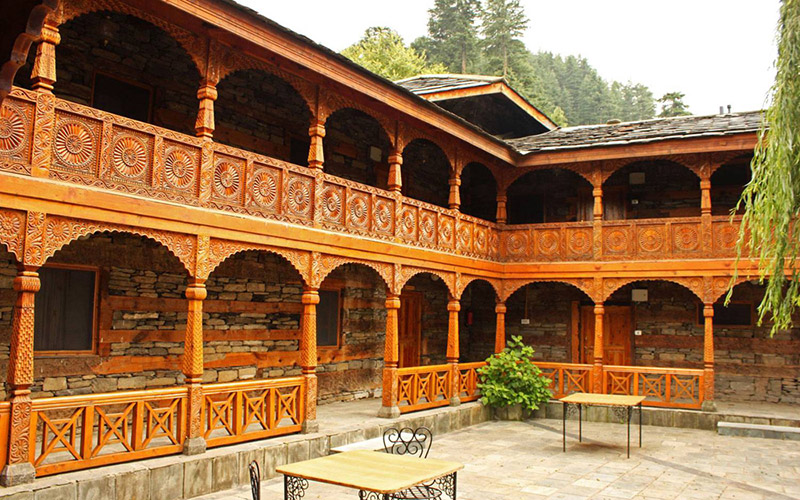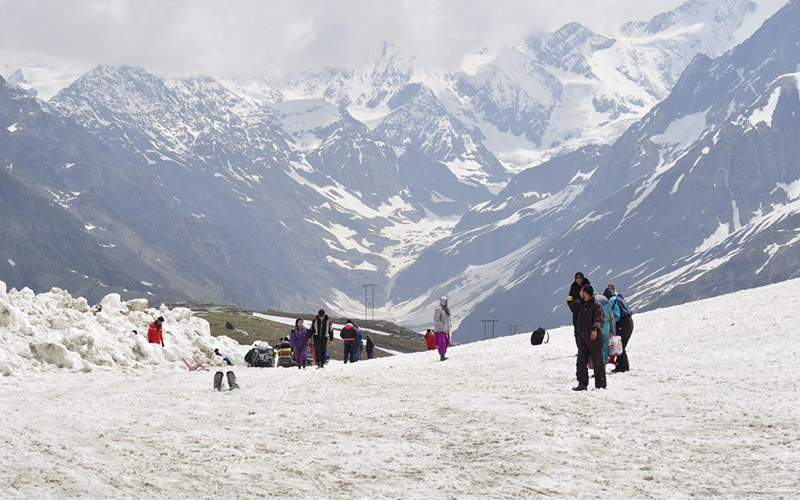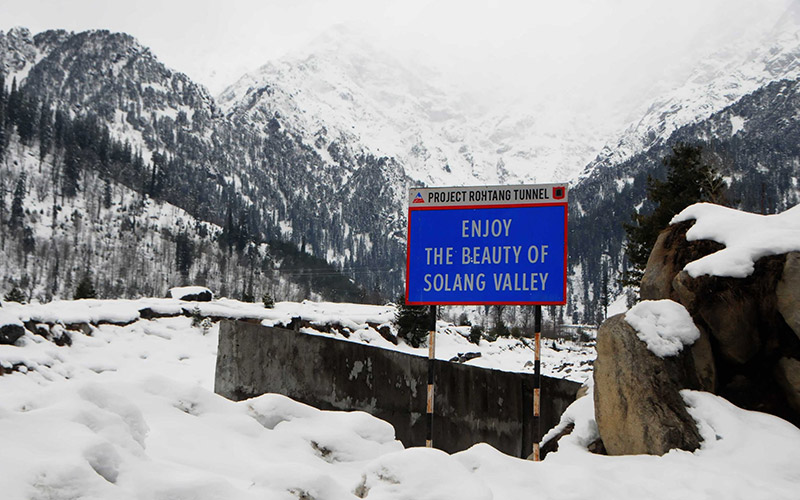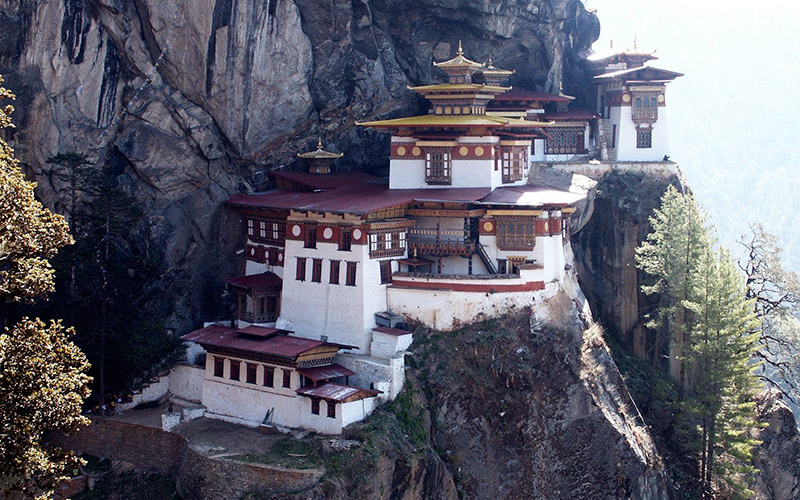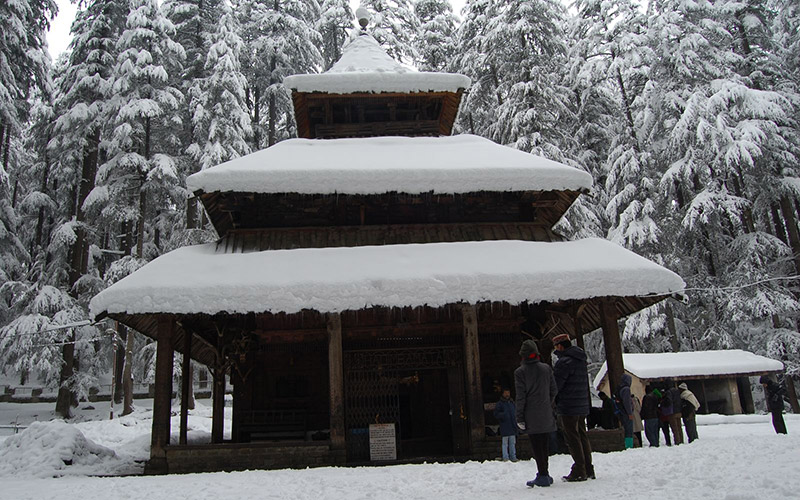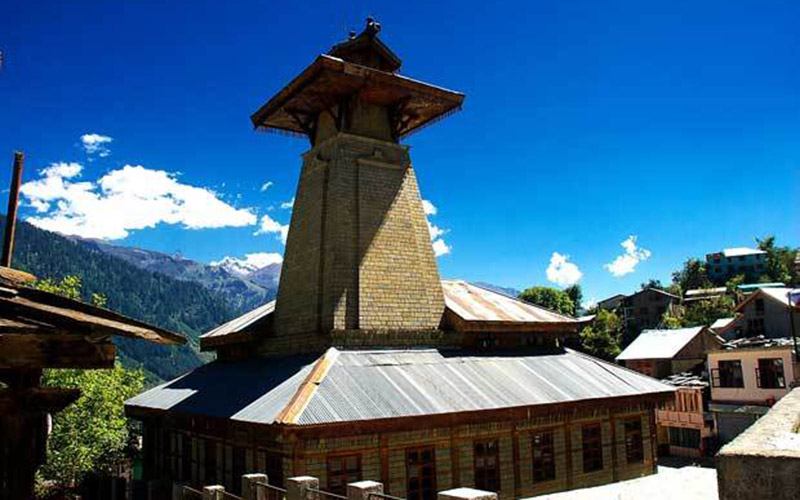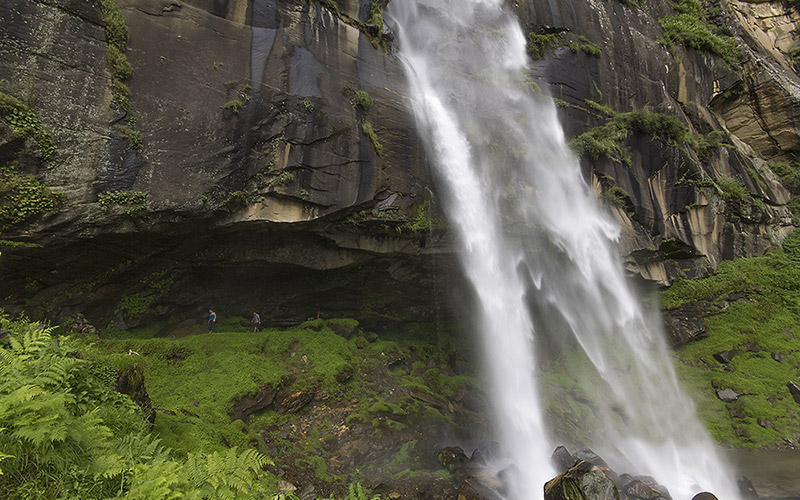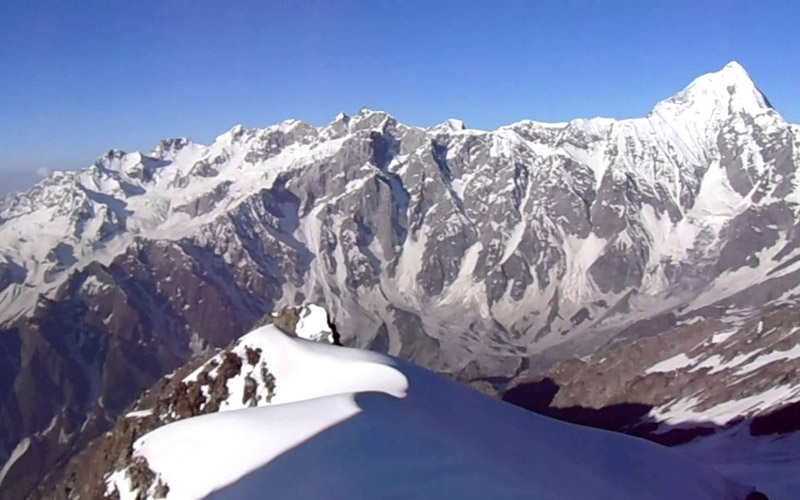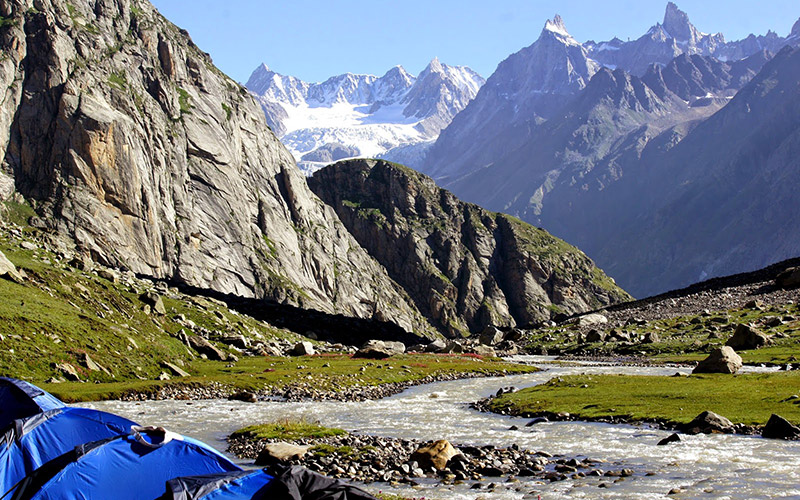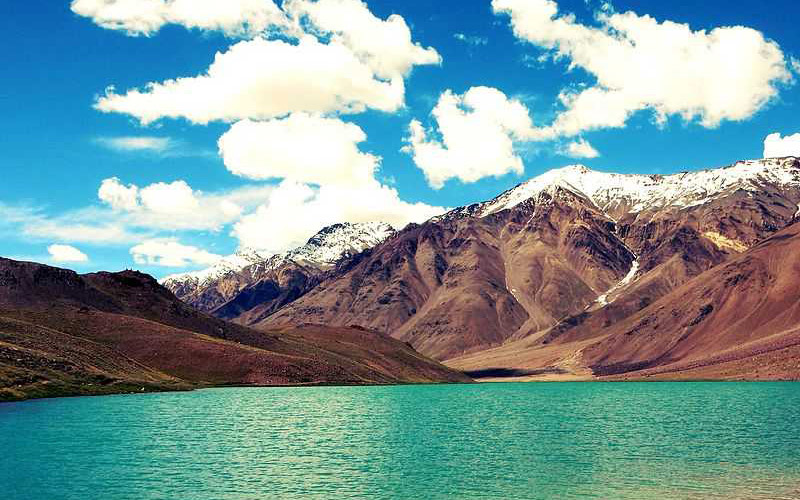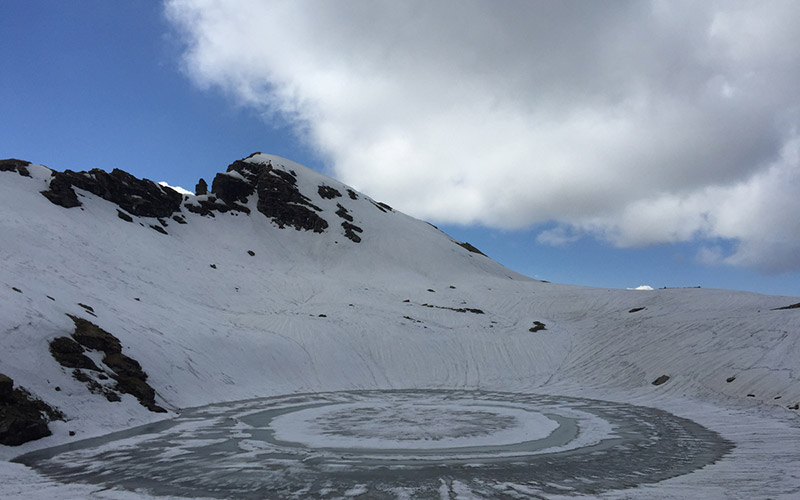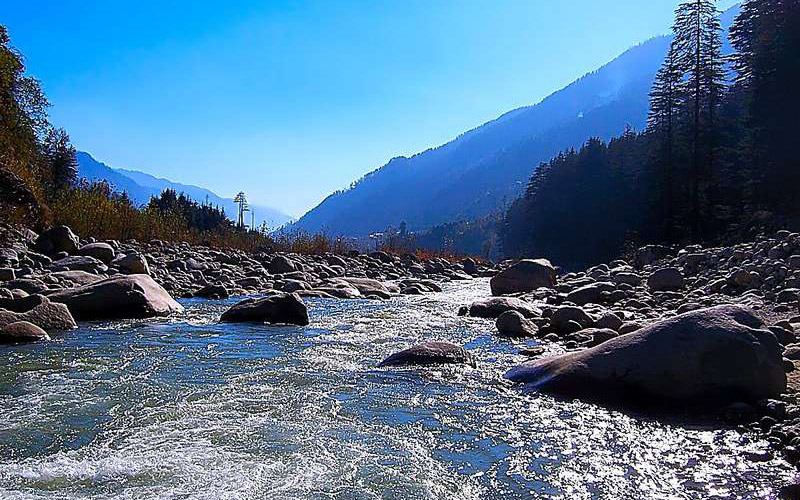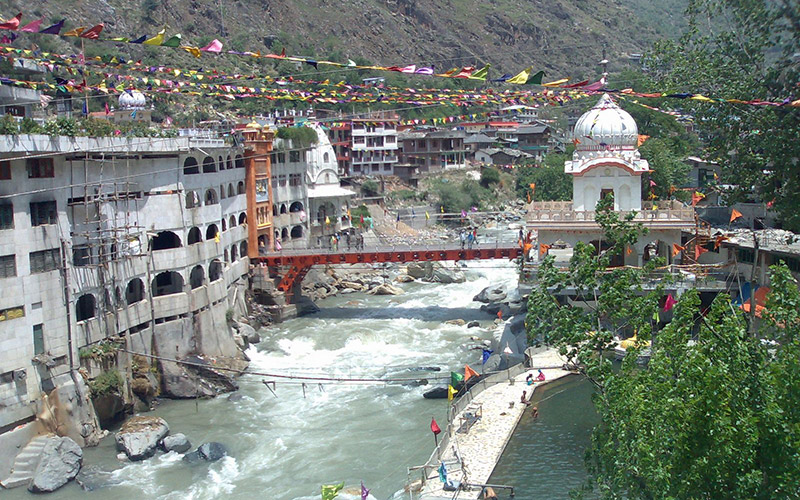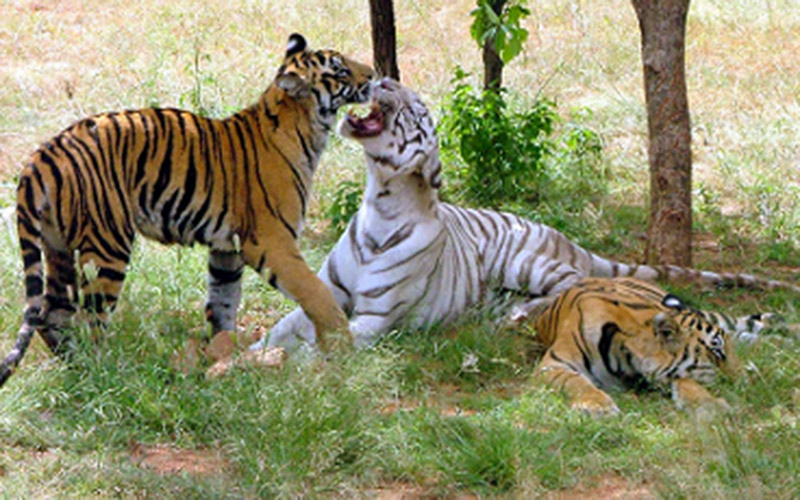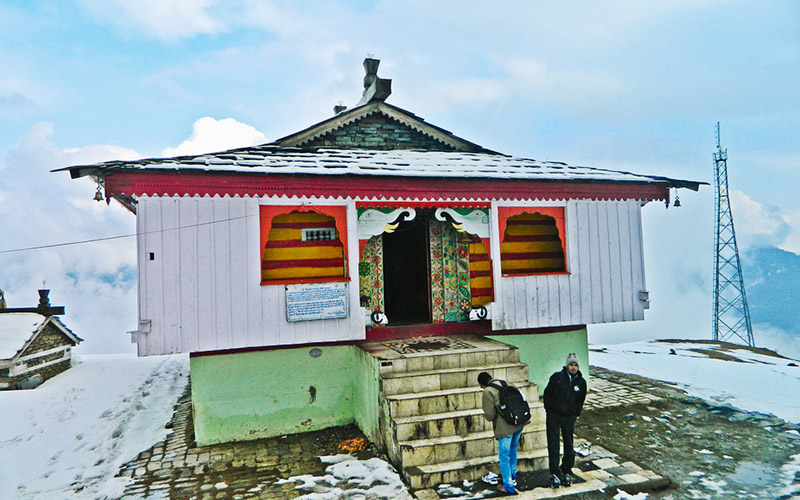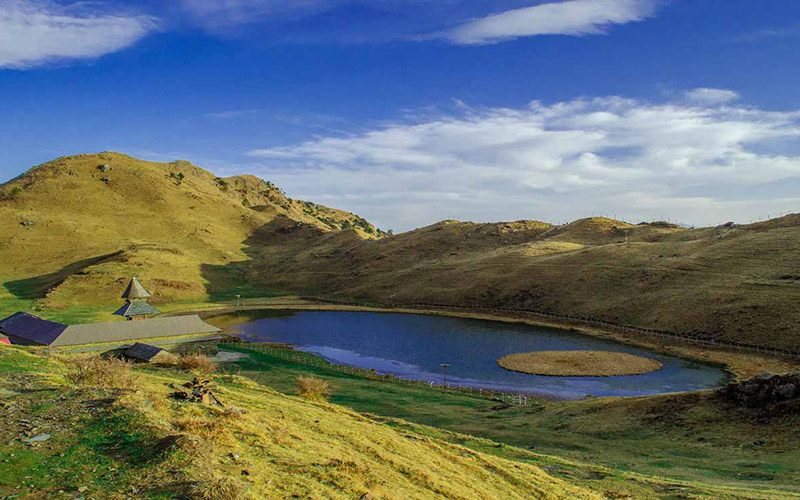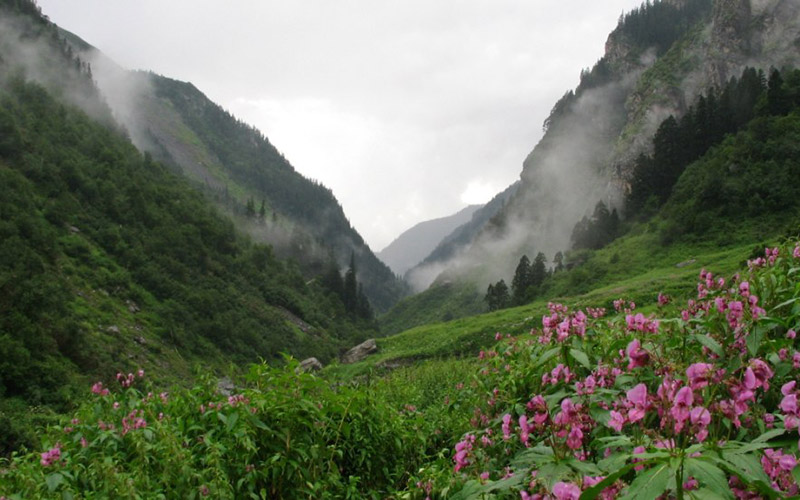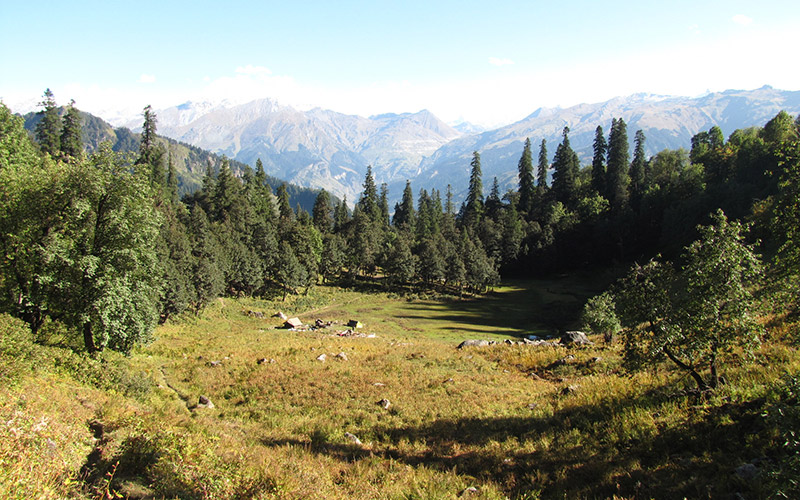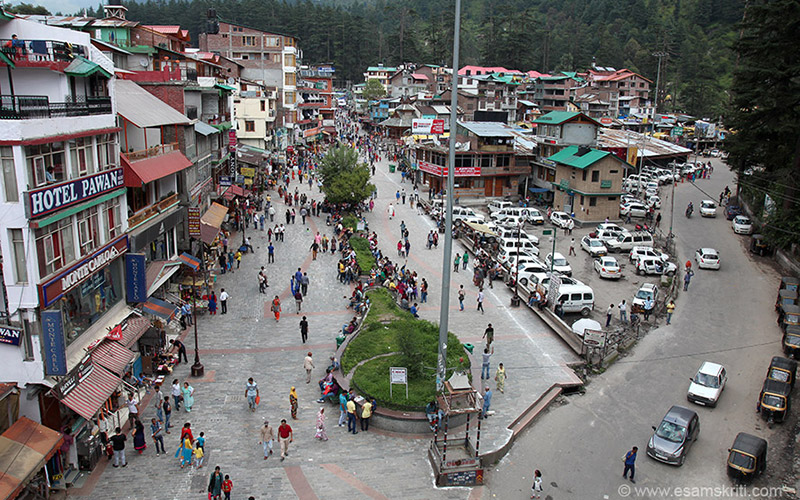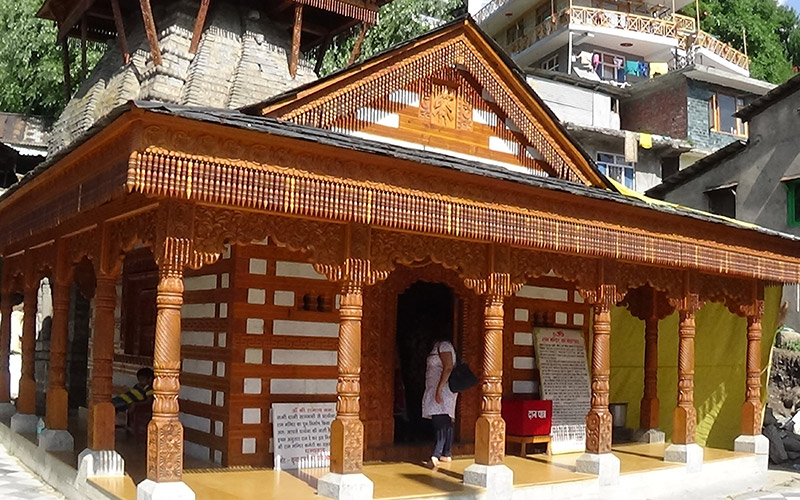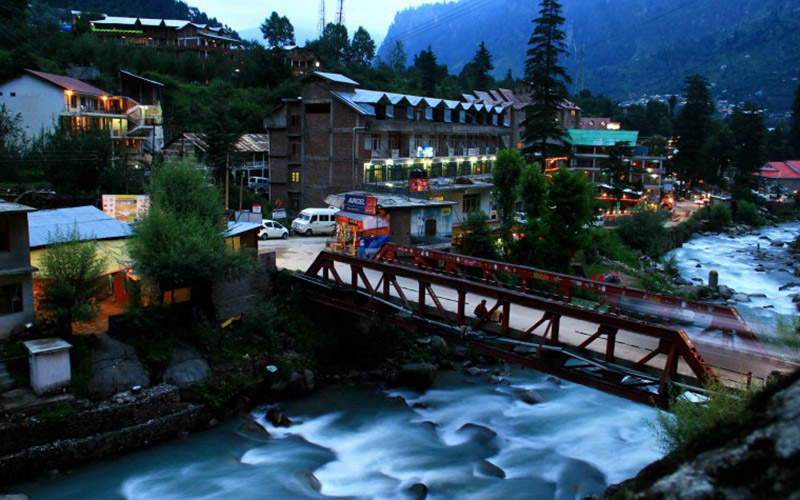Garden with Apple Orchard & Himalayan Flowers
Garden with Apple Orchard & Himalayan Flowers
Swimming Pool




Kitchen Utopia
Kitchen Utopia
Hadimba Temple
Hadimba Devi Temple, also known as the Hadimba Temple, is located in Manali, a hill station in the State of Himachal Pradesh in north India. It is an ancient cave temple dedicated to Hadimba Devi, sister of Hidimb, who was a character in the Indian epic, Mahabharata. The temple is surrounded by a cedar forest at the foot of the Himalayas. The sanctuary is built over a huge rock jutting out of the ground, which was worshiped as an image of the deity. The structure was built in the year 1553.Hadimba, a ‘Rakshashi’ in the Mahabharata has been deified and is worshipped in this area. According to Mahabharata ‘Hadimba Rakshash’ ruled some of the sub-mountainous tracts of the Himalayas. His sister was Hadimba or Hadimba.manali taxi service, taxi service in manali, attrctions in manali The Hadimba Devi Temple has intricately carved wooden doors and a 24 meters tall wooden “shikhar” or tower above the sanctuary. The tower consists of three square roofs covered with timber tiles and a fourth brass cone-shaped roof at the top. The earth goddess Durga forms the theme of the main door carvings. The temple base is made out of whitewashed, mud-covered stonework. An enormous rock occupies the inside of the temple, only a 7.5 cm (3 inch) tall brass image representing goddess Hadimba Devi. A rope hangs down in front of the rock, and according to a legend, in bygone days religious zealots would tie the hands of “sinners” by the rope and then swing them against the rock.About 70 meters away from the temple, there is a shrine dedicated to Goddess Hadimba’s son, Ghatotkacha who was born after she married Bhima. As per another legend, the architect of the temple had to lose his hand for this masterpiece. King was afraid of duplication of the master craft and he ordered architect’s hand to be cut.
Utopia Wellness Spa with Jacuzzi
Utopia Wellness Spa with Jacuzzi
Indoor Games Centre
Indoor Games Centre
Dhungri Van Vihar - Click Here to know more
Van Vihar National Park is one of the most frequented attractions in Manali. Located favourably on the Mall Road, this park is populated with many deodar trees that provide shade to the whole area. For the convenience of visitors, the park is provided with concrete as well as wooden benches. It is an ideal place for enjoying picnics and spending moments of repose with your loved ones. Its well-laid paths are perfect for a long and refreshing stroll amid lush greenery.
Museum of Himachal Cultre & Folk Art - Click Here to know more
Museum of Himachal Culture and Folk Art is a stone's throw from Hidimba Devi Temple at Manali. It is located 2-3 km from Manali main town. The Museum was established in 1998 to collect and exhibit cultural and folk art antiques articles of Himachal Pradesh. But the initiative to collect articles of traditional values from all over Himachal began long time back in 1990. The Museum is housed at Utopia complex. J.R. Sood who founded the Museum traveled throughout the State to research, and collect ancient antique items. The Museum has an admirable collection of rare and almost extinct articles, which belonged to the forgotten era.The Museum not only helped in preserving the culture and art but also brings awareness about the almost extinct traditions. The items exhibited here highlights the traditional way of life of the Himachal people. Under one roof it presents almost all aspects of the daily uses of the ancient Himachali people like clothes, stone mortar, earthen pots, hubble bubble, musical instruments, wooden carvings, weight scale, Kulluvi kitchen, traditional houses, handloom, ornaments etc. Visiting this place enriches your knowledge on traditions and art of the State.
Kids Fun Park
Kids Fun Park
NAGGAR CASTLE AND NAGGAR TO JANA ROAD TRIP
Situated on the left bank of river Beas at an altitude of 1851m, Naggar - an ancient town commands extensive views, especially to the northwest of the valley. It was founded by Raja Visudhpal and continued as the headquarters of the state until the capital was transferred to Sultanpur (Kullu). Today, this beautiful ancient palace is a tourist favourite.
We insist on taking a road trip from Naggar to Jana. Jana is around 12kms from Naggar. Ascending the mountains, the views enroute takes one by surprise. An unreal experience of driving through evergreen forests, apple orchards and wide-spread wild-agri lands.
ROHTANG PASS
A beautiful spring at the Nehru Kund (6 kms), a quiet picnic spot in Kothi (12 kms) and the Rahalla Falls (16 kms) at 2,500 meters are few of the places worth visiting enroute Rohtang Pass, 51 kms from Manali at 3,980 meters is the gateway to the desert lands of Lahaul-Spiti. The pass remains open to traffic between June and November
SOLANG VALLEY
Solang Nala (Valley) is a side valley at the top of the Kullu Valley in Himachal Pradesh, India. Based 14 km northwest of the resort town Manali on the way to Rohtang Pass, and is known for its favourable climatic conditions for summer and winter sports. The most commonly offered adventure activities are: parachuting, paragliding, skating and zorbing. Giant slopes of lawn comprise Solang Valley and provide its reputation as a popular ski resort. During the summer months Zorbing (a giant ball with room for 2, rolled down hill-slope), paragliding, parachuting and horse riding replace the winter sports due to the absence of snow.
TIBETAN MONASTERY
The Himalayan Nyingmapa Gompa is a famous monastery in Manali. The monastery consists of a huge gold coated statue of Lord Buddha that makes it a mesmerizingly beautiful and peaceful place to visit. The property carries traditional fragrances of Tibetan incense. Melodious chants add wonders to the soulful ambience of the monastery. The place is frame-worthy in the late hours when illuminated with lights. Visitors can shop traditional carpets, souvenirs and other Tibetan handicrafts near the monastery.
HADIMBA TEMPLE
Sister of ‘Rakshas’(evil) Hadimba, ruler of the mountains, Goddess Hadimba is revered in this sacred place. Following the mythological tales, it is believed that, when Bhima; one the Pandava brothers, met goddess Hadimba; instantly fell in love and wished to marry her. But, Bhim had to kill her brother first in order to do that. Soon after the death of her brother and her marriage with Bhim, goddess Hadimba reigned the throne and proved to be a good queen.
MANU TEMPLE
Believed to be the abode of ‘Manu’, Manali houses a lovely shrine dedicated to this ancient law giver of India. The popular belief is that this place closely resonates with the seventh incarnation of the great sage. Mythology states that he saved the Vedas and the seven sages from this inundation. It is assumed that subsequent to the great flood, Manu landed at Manali and then lived here ever since.
Located 3 kms from the main market of old Manali region, this might be the only temple of Manu in India.
JOGINI FALLS
Trek to the Jogini Falls in Manali is one of those pockets of nature that leave you spellbound. Located in Vashisht area in Kullu district, the trail to Jogini Falls begins close to the German Bakery Cafe. You will embark on the trail observing typical views of northern villages and camping sites. The green gradient only gets serene by the climb. Chirping of birds and the sound of water gushing through a small rivulet breaks the tranquility. You still won’t complain!
FRIENDSHIP PEAK
Located at an altitude of 5298 Meters, on the banks of Beas Kund in Manali. The Friendship peak faces numerous peaks like Shiti Dhar, Hanuman Tibba and Seven Sisters. It is known to be the only open peak in Himachal. It marks as one of the must visits in manali, solely for the panoramic view of Great Himalayan Ranges, Dhauladhar Ranges and Pir Panjal Ranges. The peak also attracts several adventure lovers and mountaineers for non-technical treks.
HAMPTA PASS
Based on the Pir Panjal Range in the Himalayas, Hampta Pass is located at an altitude of 4270m. It is a small corridor between Lahaul and Kullu valley in Himachal, India. The pass is known for its natural wild flora display, several kinds that grow at the altitude between 3000 to 3800 meters. The breathtaking views of vertical rock walls, water falls, hanging glaciers and tiny lakes make this an absolute pictures worthy visit.
CHANDRA TAAL LAKE
‘Chandra Taal’ stands for Lake of the moon. The Lake derives its name from the crescent shape. Its is surrounded by the scree mountains overlooking the lake on one side and a magnificent cirque on the other. Located at an Altitude of 4300 meters, the Lake is situated in the spiti part of Lahaul and Spiti district of Himachal. The Lake is known to be bikers’ and campers’ favourite, for the views enroute motorable road from Batal and trekking trails surrounding the lake and the mountains. Nearby places cover the Kunzum Pass and Suraj Tal.
BHRIGU LAKE
A high altitude lake located in Kullu district, the Bhrigu Lake is 4235 meters above sea level. It lies in the east of Rohtang Pass and is about 6km from the village of Gulaba. Holy place of great saint Bhrigu Rishi, this lake is held sacred to the sage, Bhrigu. The very reason of its popularity is that, many trekking trails lead to this lake.
RIVER BEAS
Also known as Bias, flowing from Himalayas is a 470 Km long river that meets Sutlej river in Punjab. Beas is significant ever since its mention in the indian Vedas as a misnomer for vyasa, the presiding patron of the river. The river marks the easternmost border of Alexander the great’s conquests in 326 B.C.
MANIKARAN
A pilgrimage center for the Hindus and Sikhs, Manikaran follows a belief that Lord Manu recreated human life in Manikaran after floods. The center holds several temples built for hindu deities Rama, Krishna and Vishnu. and a Gurudwara. Visiting this place has you encountering lush green and beautiful landscapes that richen the soulful experiences. Several hot springs and mythological stories revolving around the same are few of the reasons that make it visit worthy.
VAN VIHAR NATIONAL PARK
A beautiful location in the heart of Manali, Van Vihar National Park is just put up across the Mall. Inside this beautiful park is an enchanting Deodhar forest. You could laze under the tall trees or stroll around the park to escape noisy cities and urban stress.
Bijli Mahadev: Abode of Lord Shiva
Bijli Mahadev is one of the sacred temples of the Indian state of Himachal Pradesh. It is located at an altitude of about 2,460m in the Kullu Valley. Bijli Mahadev is one of the excellent temples in India. Located 22 km from Kullu across the Beas river, it can be approached by a rewarding trek of 3 km.A panoramic view of Kullu and Paravati valleys can be seen from the temple. The 60 feet high staff of Bijli Mahadev temple glistens like a silver needle in the sun.In this temple of lightning, it is said that the tall staff attracts the divine blessings in the form of lightning. It is believed that the priest of the temple has to restore the Shiva linga placed inside the temple using butter and sattoo after every lightning as it shatters to pieces with flash of lightning.
Prasher Lake : The Divine Waters
Prashar Lake lies 49 km north of Mandi, Himachal Pradesh, India, with a three storied pagoda-like temple dedicated to the sage Prashar. The lake is located at a height of 2730 m above sea level. With deep blue waters, the lake is held sacred to the sage Prashar and he is regarded to have meditated there. Surrounded by snow-capped peaks and looking down on the fast flowing river Beas, the lake can be approached via Drang.The temple was built in the thirteenth century and legend has it was built by a baby from a single tree. The lake has a floating island in it and it is said to be unclear how deep it is, with a diver not being able to determine its depth.
The Great Himalayan National Park
The Great Himalayan National Park Conservation Area (GHNPCA) as a Natural Site was inscribed into the UNESCO World Heritage List during the session of the 38th World Heritage Committee in Doha, the State of Qatar, on 23rd June 2014.The inscription confirms Great Himalayan National Park Conservation Area’s Outstanding Universal Value as a site containing the most important and significant natural habitats for in-situ conservation of Western Himalayan biological diversity, including those containing threatened species of outstanding universal value from the point of view of science or conservation.The Great Himalayan National Park (GHNP) is located in the Kullu District of Himachal Pradesh, India. Initially constituted in 1984, GHNP was formally declared a National Park in 1999, covering an area of 754.4 sq kms. In 1994, two major changes were made in land use around the Park. A buffer zone of 5 km from the Park’s western boundary, covering 265.6 sq km. and including 2,300 households in 160 villages, was delineated as an Ecozone. Most of the population (about 15,000 to 16,000 people) in the Ecozone are poor and dependent on natural resources for their livelihoods.
Lama Dug
Packed with snow and a myriad of bird life early on in the season, the Lamadugh trek is an ideal trek to introduce oneself to the undeniable allure of trekking. The trek is the perfect activity for a day spent outdoors and for escaping the crowds that Manali attracts.Gaining a height of over 3200ft in 5 hours, the Lamadugh trek takes us through ever changing vistas. Starting from the famous Hadimba Temple, the trail winds through Pine, Oak, Horse Chestnut, Maple, and Cedar forests to come to picturesque glades with sweeping views of Manali, the Manalsu glacier, the Dhauladhar and Pirpanjal ranges including Hanuman Tibba, Deo Tibba and Rohtang Pass.
The Mall
Mall Road is the lifeline of Manali as the whole city revolves around this attraction. It is the heart of the city where bus and taxi stands are located. The main market perhaps is the main attraction at the Mall. Tourists can enjoy a quiet stroll across the Mall and pick up the enchanting bric-a-bracs that are sold in the various shops lined across the street. Some of the most popular buys here includes shawls, kullu caps and many other woolen items. Various restaurants and eating joints are also available to keep the tourists entertained
Vashisht Temple
Vashisht village is a green patch of steep hill hanging at the base on a cliff. The village is 6 km from Manali at the banks of the Beas River opposite Old Manali. Vashisht is reachable from Manali by half an hour walk or a short drive up a slanting road by Auto Rickshaw for Rs.50. Most foreign tourists preferred staying here or at the Old Manali than the downtown Manali. Rich traditions and nice cafes are integral for backpackers. Vashisht has all that. Like Old Manali, Vashisht is crowded with tourists during peak seasons.Vashisht was named after Rishi Vashisht one of the seven sages of Hindu. Legend has it that the saddened Rishi Vashisht after learning that his children were killed by Vishwamitra tried to commit suicide. But the river refused to kill him. The river was therefore named as Vipasha which literally means ‘freedom from bondage’. It was later shortened to Beas River. He began mediating and vowed to start his life anew. The Vashisht temple which exists even today is believed to be more than 4000 years. It’s difficult to imagine how a place so old could remain so small. Perhaps the village is protected by its difficult landscapes. Vashisht temple is built in a traditional style with lots of intricate wood carvings. It is also most popular for hot springs which is believed to have medicinal value. There are separate bathing arrangement for men and women. According to another legend Lakshman who paid a visit realized that the sage had to go for long walks to take bath. He shot an arrow into the ground and hot water began to gush out. There’s another temple ancient stone temple known as Rama Temple adjacent to the Vashisht Temple.Vashisht village is considered an important place by the Hindus in India. The place is often associated with pilgrims.
Old Manali
A bridge over gushing Manalsu River is a gateway to another world known as the Old Manali. The village has an exotic charm; not foreign, not entirely Indian. It is as if you have crossed into another country. Just as the Beas River stopped the invincible force of Alexander’s armies from marching further east, Old Manali has somehow chiseled out a world of its own guarded by Manalsu River. The village is as idle as a fairy tale but at the same time it is exposed to the comfort of today’s world. Two sides of the same coin exist side by side in the village. We have the idyllic village and the locals on one side and the fast growing tourist population and guest houses on the other side. Both are unique in their own way and each has their own distinct space.

